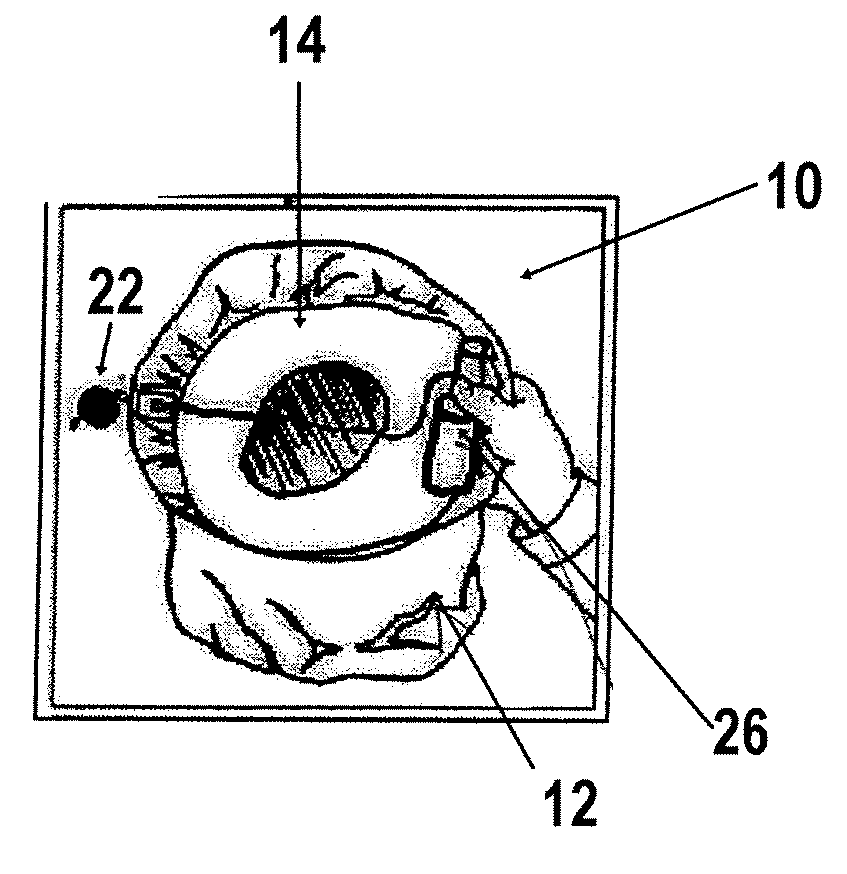Protective hood
- Summary
- Abstract
- Description
- Claims
- Application Information
AI Technical Summary
Benefits of technology
Problems solved by technology
Method used
Image
Examples
Embodiment Construction
[0032]With reference to the several drawings, a protective breathing apparatus, generally designated 10, includes a hood portion 12 for covering the user's head. A neck seal, generally designated 14, is shown in FIGS. 1 and 2.
[0033]Neck seal 14 is formed of elastomeric sheet-like material, preferably entirely, and at least in part, silicone, and has a substantially circular perimeter 16. A substantially centrally located aperture 18 is provided in and defined by neck seal 14 and is large enough that it can be readily manually stretched for purposes of donning apparatus 10 over a wearer's head and thereafter accommodating the wearer's neck, without choking the wearer. A contiguous rim or collar 20 extends on one side of neck seal 14 so as to provide a fluid-tight interface between the breathing apparatus and the wearer's skin.
[0034]Neck seal 14 is extremely strong, yet pliable enough to be manually stretched so that aperture 18 will fit over a wearer's head. As shown in FIGS. 13 neck...
PUM
 Login to View More
Login to View More Abstract
Description
Claims
Application Information
 Login to View More
Login to View More - R&D
- Intellectual Property
- Life Sciences
- Materials
- Tech Scout
- Unparalleled Data Quality
- Higher Quality Content
- 60% Fewer Hallucinations
Browse by: Latest US Patents, China's latest patents, Technical Efficacy Thesaurus, Application Domain, Technology Topic, Popular Technical Reports.
© 2025 PatSnap. All rights reserved.Legal|Privacy policy|Modern Slavery Act Transparency Statement|Sitemap|About US| Contact US: help@patsnap.com



